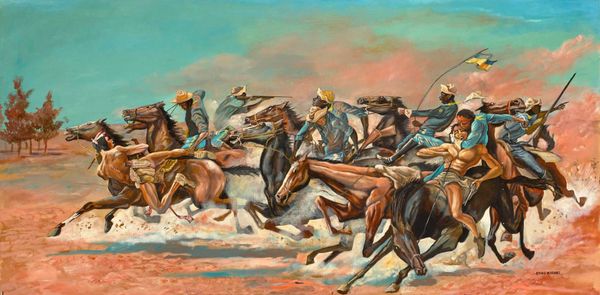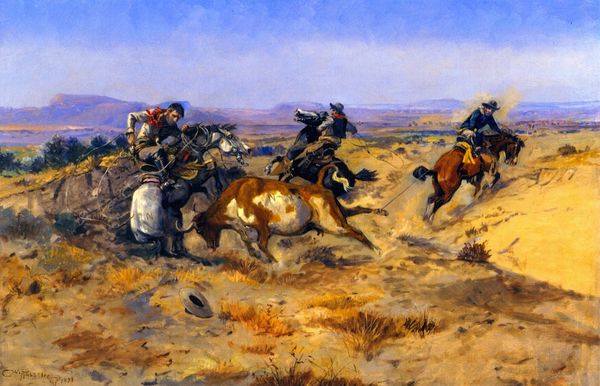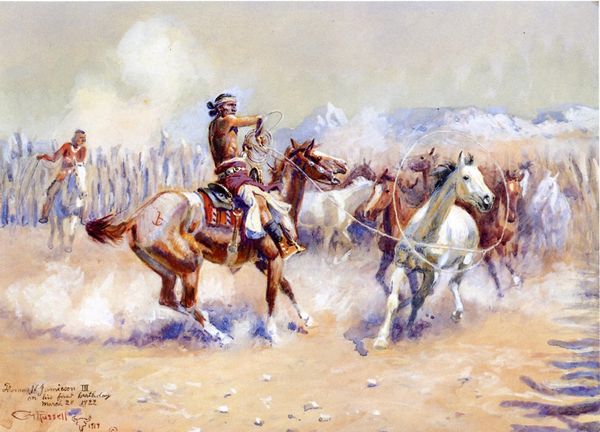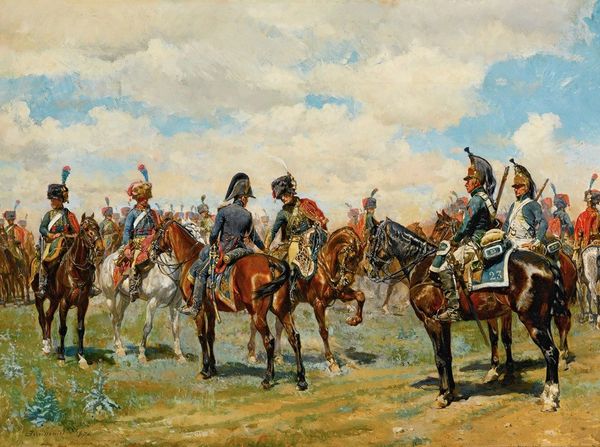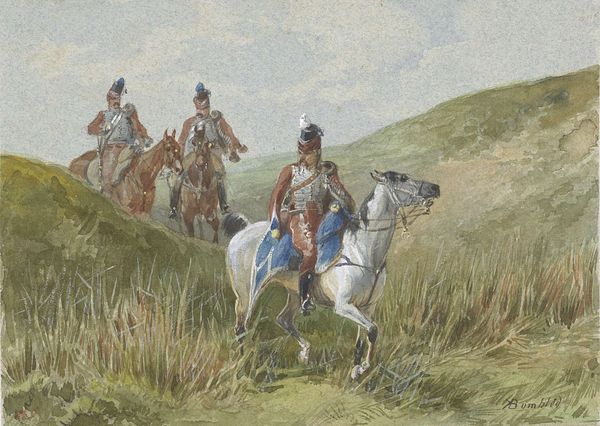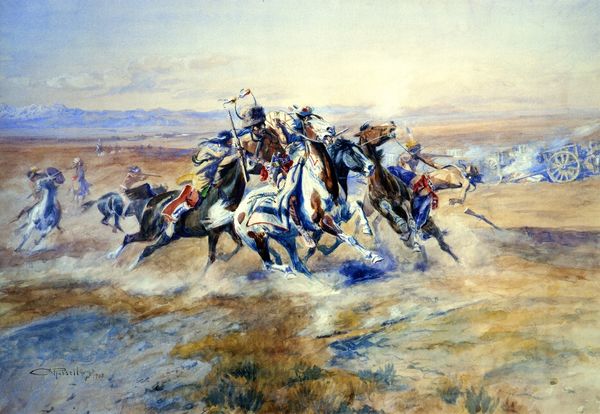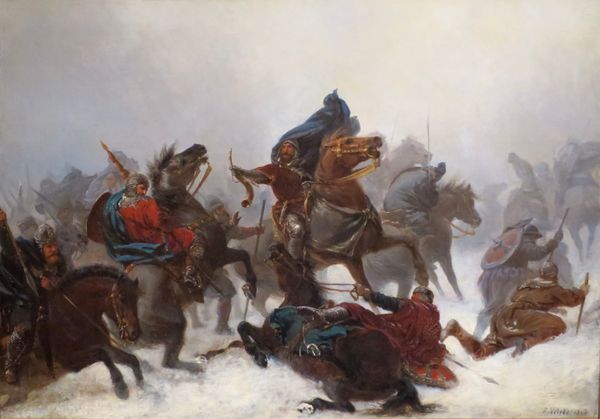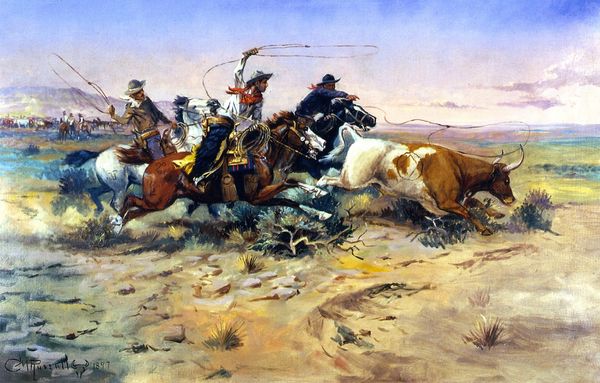
The Advance-Guard, or The Military Sacrifice (The Ambush) 1890
0:00
0:00
Dimensions: 87.3 × 123.1 cm (34 3/8 × 48 1/2 in.)
Copyright: Public Domain
Editor: Here we have Frederic Remington's "The Advance-Guard, or The Military Sacrifice (The Ambush)," an 1890 oil painting. It really captures this intense feeling of… unease, I think, with the landscape almost closing in on these soldiers. What strikes you about this piece? Curator: Look closely at the broken rifle abandoned in the foreground. What does this tell us about the process leading up to this moment? Remington, remember, wasn’t just depicting a scene, but crafting a narrative through the materiality of war – the spent and broken tools of violence. Editor: That’s a fascinating point! So you're suggesting the rifle itself is evidence of the material reality of conflict and also commenting on mass manufacturing perhaps? Curator: Precisely. Consider also the horses. Note how their postures – the straining muscles, the lathered coats–are meticulously rendered. Remington used oil paints, layering them to create texture that communicates physical exertion, right? The horse is often overlooked, but consider its importance as a mode of transit that enabled and defined 19th century Western Expansion. Editor: Yes, I see how Remington emphasizes the labor through the rendering of the horse and its accoutrements! Is he challenging, maybe subverting, a glorification of conquest by drawing our attention to its cost and toil? Curator: Absolutely. It forces us to confront not just the “glory” but also the physical and material costs associated with that period. It wasn't simply heroic charges, but a complex web of production, logistics, and ultimately, loss. Remington's artwork helps illuminate how deeply labor is embedded into conquest. Editor: So looking beyond just the narrative of the soldiers themselves opens up new questions. I hadn’t considered the material elements as active parts of that narrative. Curator: Exactly! Thinking through these production aspects – from equipment manufacturing, all the way to its breakdown in real-world action – makes a huge difference to appreciating its statement.
Comments
No comments
Be the first to comment and join the conversation on the ultimate creative platform.



